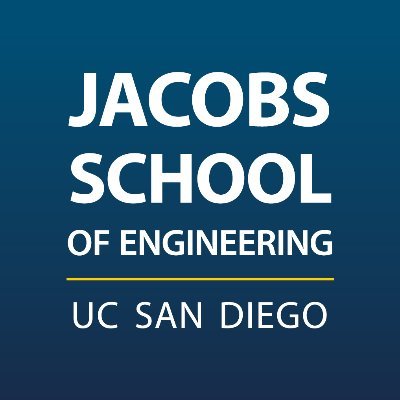News

April 4, 2014
Engineering a New Biomaterial Therapy for Treating Heart Attacks
Bioengineering professor Karen Christman's new injectable hydrogel, which is designed to repair damaged cardiac tissue following a heart attack, has been licensed to San Diego-based startup Ventrix, Inc, which is planning the first human clinical trials of the technology. Full Story

April 2, 2014
Understanding How the Brain Controls Movement
A University of California, San Diego research team led by bioengineering professor Gert Cauwenberghs is working to understand how the brain circuitry controls how we move. The goal is to develop new technologies to help patients with Parkinson's disease and other debilitating medical conditions navigate the world on their own. Their research is funded by the National Science Foundation’s Emerging Frontiers of Research and Innovation program. Full Story

March 27, 2014
Cymer Co-Founder Richard Sandstrom and Wife, Sandra Timmons, Give $1.2 Million for Students
University of California, San Diego alumni Sandra Timmons and Richard Sandstrom, co-founder of Cymer, Inc., are passionate about their alma mater and helping future students achieve the same world-class education they received at UC San Diego. That’s why the couple recently pledged a gift of $1.2 million to the campus for student support through their charitable Timmstrom Family Fund. The gift will be split, per the donors’ wishes, to support graduate students in the Jacobs School of Engineering and undergraduates through the Chancellor’s Associates Scholars program. Full Story

March 26, 2014
It's a bird! It's a plane! It's a...pie?
Move over watermelons and pumpkins! There’s a new addition to the list of things that are being dropped from the top of UC San Diego’s buildings—pie. To be more precise, a 13-inch, 4.5 pounds cherry pie from Costco, which was dropped from the third floor of the Structural and Materials Engineering building. It was all part of Pi Day celebrations March 14 at the Jacobs School of Engineering at UC San Diego. Fun for the day also included the third annual Pi-Mile Run and Walk, which set a record for turnout, with more than 200 people taking part. Full Story

March 17, 2014
Study finds that fast-moving cells in the human immune system walk in a stepwise manner
A team of biologists and engineers at UC San Diego applied advanced mathematical tools to answer a basic question in cell biology about how cells move and discovered that the mechanism looks very similar to walking. Their discovery, published March 17 in the Journal of Cell Biology, is an important advance toward developing new pharmacological strategies to treat chronic inflammatory diseases. Full Story

March 11, 2014
New UC San Diego Biosensor Will Guard Water Supplies from Toxic Threats
Supported by a $953,958 grant from the Defense Advanced Research Projects Agency (DARPA), researchers at the University of California San Diego will develop a sophisticated new biosensor that can protect the nation’s water supplies from a wide range of toxins, including heavy metals and other poisons. The project, led by Jeff Hasty, director of the BioCircuits Institute at UC San Diego, will combine next-generation sequencing, synthetic biology, and microfluidic technologies to engineer a highly specific array of biosensors that will continuously monitor water supplies for the presence of toxins. Full Story

March 7, 2014
Dive into Technology's Future at Research Expo 2014
Research Expo will be held on Thursday, April 17, from 1:30 p.m. to 6p.m. Register today. The annual event features research posters by more than 200 engineering graduate students from UC San Diego, faculty talks, and a networking reception with faculty, students, industry partners and alumni. Full Story

February 28, 2014
Bioengineering Students Recognized for Outstanding Research
Several bioengineering students have been recognized for their outstanding research. Full Story

January 30, 2014
Studying Stem Cell Diets to Make Better Heart Cells
What nutrients are needed for stem cells to grow and function as heart cells? That’s the question at the heart of research led by bioengineer Christian Metallo at the University of California, San Diego. He is one of eight UC San Diego researchers to receive a combined total of $8.165 million in funding from the California Institute for Regenerative Medicine in a new round of Basic Biology awards announced Jan. 29. Metallo’s share is $1.124 million. The awards were made by CIRM’s Independent Citizens Oversight Committee. Full Story

January 24, 2014
UC San Diego Highlighted in Governor's State of the State Address
As Governor Edmund G. Brown Jr. delivered his annual State of the State address to the Legislature yesterday, he highlighted the University of California, San Diego as a leader in developing medical and scientific advances. In prepared remarks, Gov. Brown noted, “Four out of the world’s 20 leading academic bioscience institutions are located here in California: UCSF and Berkeley, UCLA, Stanford and UC San Diego. Just as California has led the way with stem cell research, so too can we pioneer the new field of precision medicine which uses genomics, medical devices, computer sciences and other fields to treat individual patients, instead of broad populations.” Full Story
